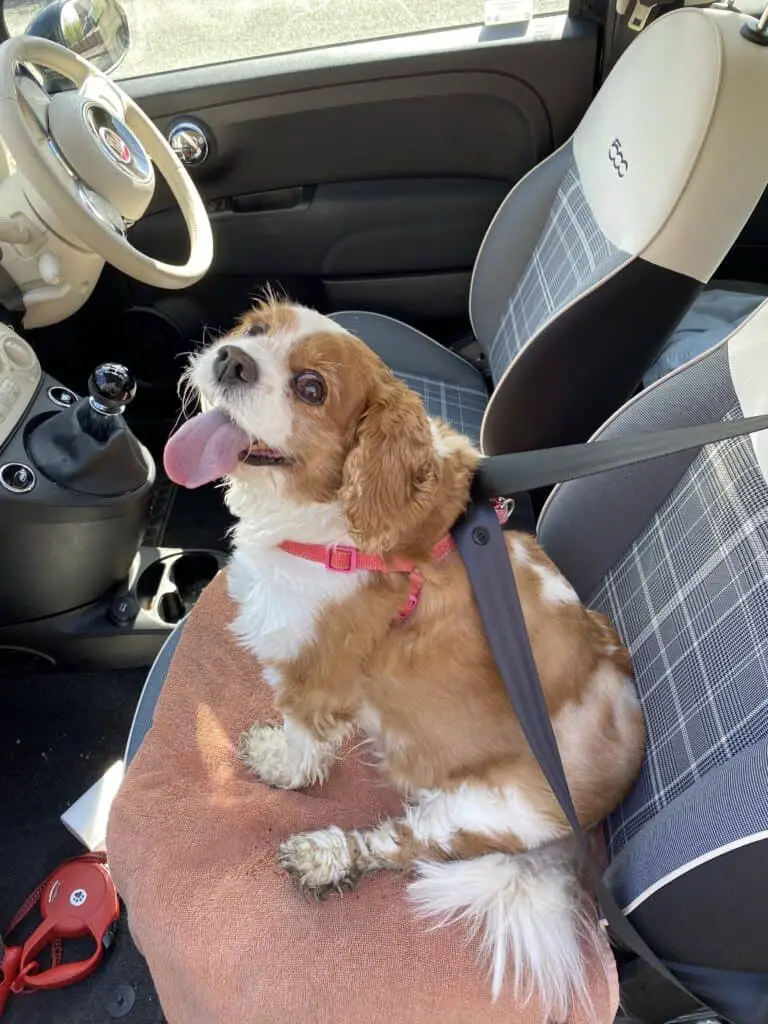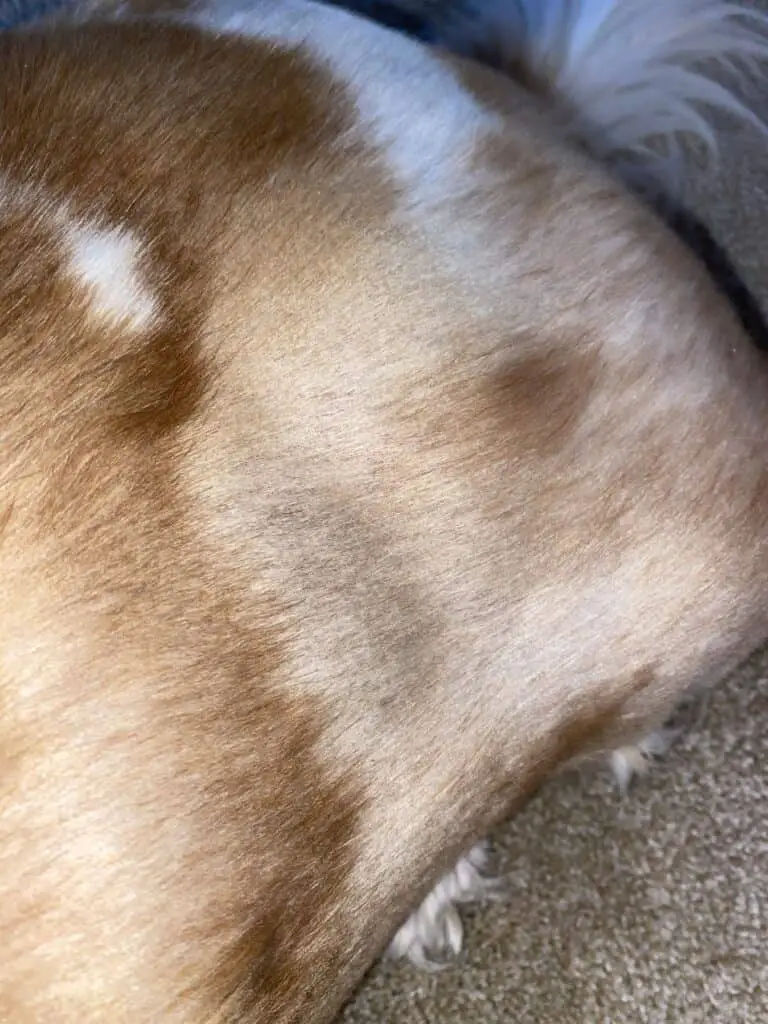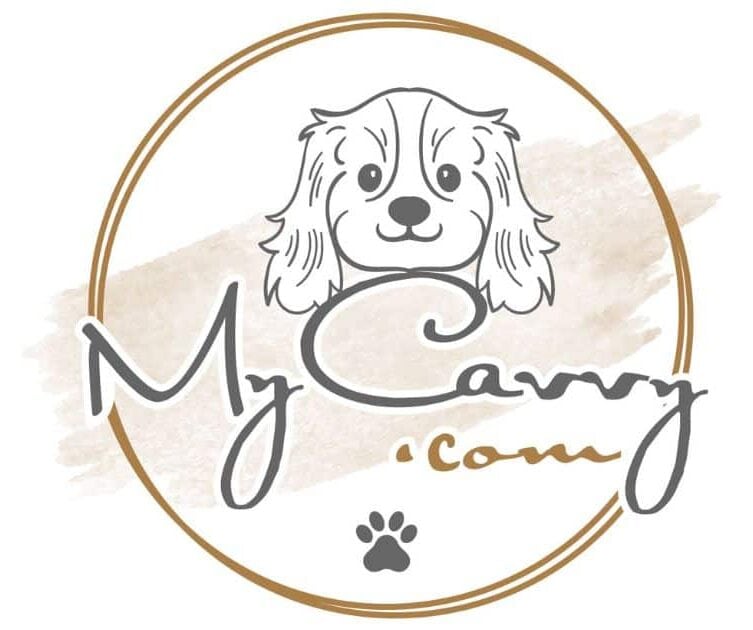
The Cavalier King Charles Spaniel is well known for its luscious silky coat that is wavy on the ears and has a feathering effect on the lower legs and paws. The wavy long coat is synonymous with the Cavalier, so should you trim your Cavaliers coat?
As a general rule, a Cavalier King Charles Spaniel show dog should not have its fur-trimmed at all. However, trimming under the paw and in between the pads is permitted as this prevents problems with walking from overgrown fur, and also prevents slipping on shiny surfaces such as floor tiles.
Not all Cavaliers are show dogs though, and so for a family pet is there any reason to not have your Cavalier’s fur-trimmed? After looking into this subject, it seems that there is a lot more to a Cavalier King Charles’ coat than at first thought.
One Coat or Two?
Cavaliers are known as double-coated dogs which means that they have a thick bottom coat and a silky soft topcoat. So when you are grooming your Cavvy, you are essentially grooming both coats at the same time.
Other dog breeds that have a double-coat are:
- German Shepards
- Golden Labradors
- Pomeranians
- Huskies
- Golden Retrievers
- Corgies
- Border Collies
Bottom Coat
Although Cavaliers shed less than most dogs, it is vital to brush your Cavvys fur at least 3 times a week to prevent the undercoat from getting matted. If this happens, then the skin can’t breathe, which can cause skin disorders.
For Cavaliers that are show dogs, that are never clipped, there are special de-shedding tools that help to thin the bottom coat out, which also prevents it from ever getting matted. Of course, you don’t have to have a show dog to purchase a de-shedding tool to help you keep your Cavvys coat in tip-top condition.

Top Coat
The topcoat doesn’t just look pretty, it plays a vital role in your Cavaliers’ health. The thick fur acts as a barrier to prevent insect bites and sunburn, also the oils that are deep within each hair act as a waterproof barrier and prevent the bottom coat from becoming wet.
If a double-coated dog ever becomes sodden, this means that the water has penetrated into the bottom coat and can make them extremely cold.
It is recommended not to bathe your Cavalier, but if you need to then try not to bathe them more than once a month. During the bathing, the coat should be washed twice, the first wash to remove the surface dirt, and the second wash to clean each hair.
Always remember to condition your Cavaliers coat too, in order to replace all the oils removed during the washing process.
Reasons to Not Shave
Shaving a double-coated Cavvy can cause a number of skin problems such as razor burn, irritated skin, or hot spots. These problems can also be exacerbated after the cut, as your Cavvy may lick, nibble, or scratch the irritated area.
Due to the fur being a lot shorter than normal, then your Cavvy may scratch too hard which would damage the skin, causing it to bleed.
Another reason not to shave is to prevent sunburn, or even skin cancer if bare skin is in the sun too long. The topcoat actually acts as a barrier from the sun and also regulates the temperature between the coats.


Reasons to Shave
Although it isn’t recommended to shave a Cavalier, if the coat isn’t trimmed too far, there can be a number of reasons why it is a good idea:
- Matted Coat
- Bacterial or Fungal Skin Infection (to make it easier to treat)
- Swims a lot (to prevent the coat from getting sodden)
- Flea or Tick Infestation (again, to make it easier to treat)
- Too Old or Sick for Regular Brushing
We choose to get our Cavvy, Lady shaved, but not too short, as she has bald patches and a number of skin tags on her body. If we keep her coat long, brushing can be a problem as catching a skin tag in the brush can be painful for her. With shorter fur, we can see where they are and avoid them.
Bald Spots
As stated earlier, Lady suffers from bald spots on her back, but she isn’t completely bald, just her topcoat has started to fall out as she has got older. She leaves little clumps of fur around the house, where she has been lying down, her mommy (my wife Sarah) has a special box that she keeps them in.
Although Ladys’ fur loss is due to age, if your Cavvy suffers from hair loss, then please ensure you get it checked out by the vet, as there can be other medical reasons for this, such as allergies, skin infection, or parasites.

Trimming
For show Cavvys, as previously stated, a light trimming around the paws is permitted, but ensure you do your homework and find an approved professional groomer that has experience working with Cavalier King Charles Spaniels.
There are reports that dogs have been disqualified actually during the show for having incorrect trimming work around the paws.
My Final Thought
Although not recommended, a Cavalier King Charles Spaniel can have a haircut as long it is not too short. Medical reasons may demand a haircut, but your Cavvy can still look stylish if trimmed by a professional.


1 thought on “A Cavalier King Charles Spaniel Haircut: Before and After”